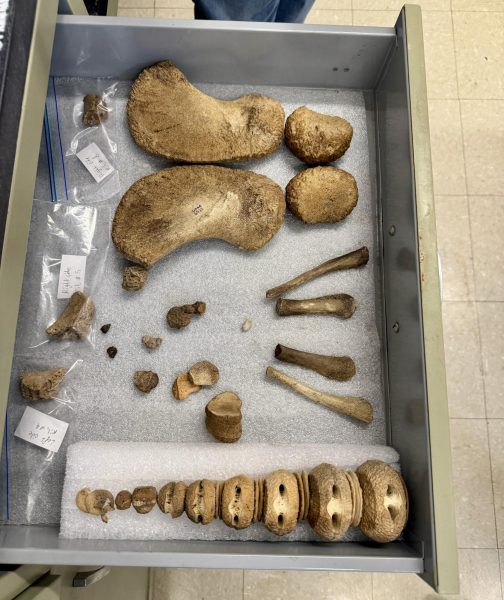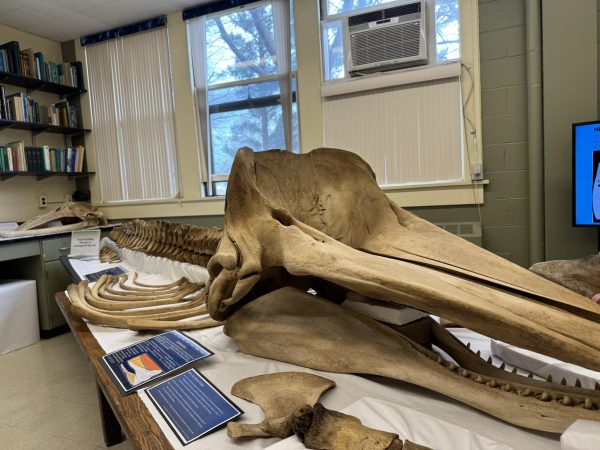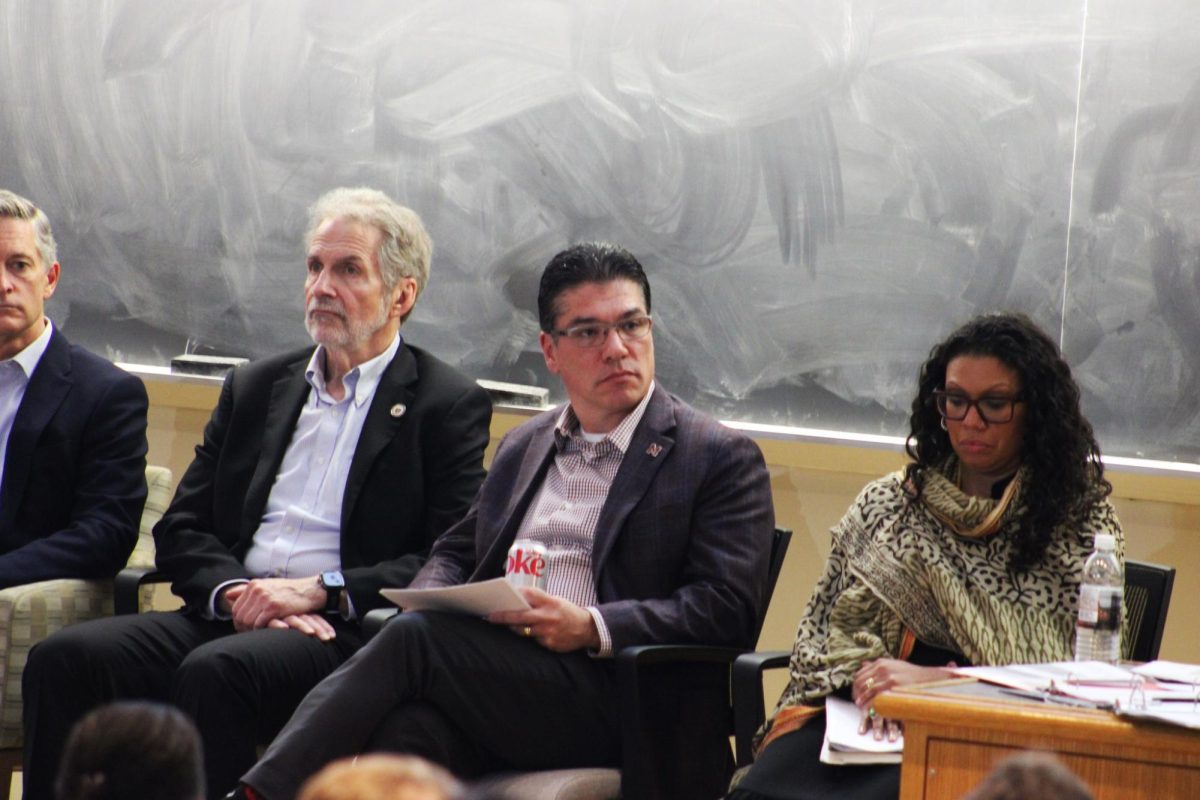On July 30, 2023, a baby sperm whale was found washed up on the Duxbury Beach Reservation. Katherine Doyle, the collections manager of the natural history collection at the University of Massachusetts, received a call about this matter and decided to have the sperm whale showcased on April 29, as one of the newest additions to the Natural History Collection at UMass.
The Natural History Collection estimated the whale to be two to four years old, based on its size and the development of its teeth, he was most likely at the younger end of that range. He was 17.5 feet long, as compared to the maximum length of a sperm whale, which is 52 feet.

Sperm whales have the largest brains out of any creature that has lived on Earth. They eat mostly squid and dive over 3,000 feet for their prey. They tend to swim together in groups called pods, which consist of 15-20 whales.
According to Doyle, this whale must have been separated from its pod for a reason that is still unknown.
The most common cause of death “for whales overall is ship strike, and then entanglement,” Christian Paunescu, a collections assistant said. Doyle and her team concluded there was “no evidence of any sort of ship strike,” however, they discovered a lot of marine trash in the whale’s stomach.
The actual cause of how the whale washed up on the shore is uncertain. Sperm whales rarely separate from their pods, unless they are hurt or injured, and it was unexpected that this whale was stranded as he had no major injuries. Doyle and the other researchers believe that due to the large amounts of trash found in the whale’s stomach, such as a mylar balloon and plastic sheeting, he was not able to consume nutrients and became weak.
According to the WWF, plastic bags can occasionally look like squid to sperm whales, which results in whales unknowingly consuming harmful plastic.
According to the Washington Post, the world’s oceans contain over 170 trillion pieces of plastic, and plastic pollution in the oceans has been rapidly rising ever since 2005, roughly doubling every six years.
“We didn’t have a sperm whale [in the collection] and they almost never strand because they’re really deep-water whales, so the chance of getting another one would be slim to none,” Doyle said.
The baby sperm whale is not the only whale in the Natural History Collection, as it also preserves a right whale and parts of a minke whale, with over 500,000 specimens in the entire collection.
Doyle shared that the hardest part about this project was transporting the whale to UMass. “Just like the logistics of dealing with something of this size … the bigger they are, obviously the harder it is.”
Many groups gathered on the beach to organize the relocation of the whale, as well as diagnose what killed it, including “Members of Whale and Dolphin Conservation, the International Fund for Animal Welfare, Seacoast Science Center, the University of New Hampshire Veterinary Diagnostic Lab, Massachusetts Division of Fisheries and Wildlife and the UMass Natural History Collections,” according to the slide show presented at the exhibit.
Doyle connected with the forensics and biology archaeology program in anthropology to use their “body farm” to let the whale decompose. She also had to contact the Hadley Farm to get sawdust to cover the whale, all in the process of cleaning the bones.

The bones of the sperm whale will remain in the exhibition room, Morrill II 144, until they find a storage space large enough to keep the bones in good condition.
“At some point, it would be nice if [the whale] was a more like permanent exhibit someplace. We will use [the whale in] teaching some classes as well,” Doyle said.
One large aspect of showcasing the whale is “to be able to use it to teach people about the biology of the whale and how important it is to continue conserving the whale considering how endangered the species [is],” Paunescu said.
Daniella Pikman can be reached at [email protected] and Alexandra Hill can be reached at [email protected].




















